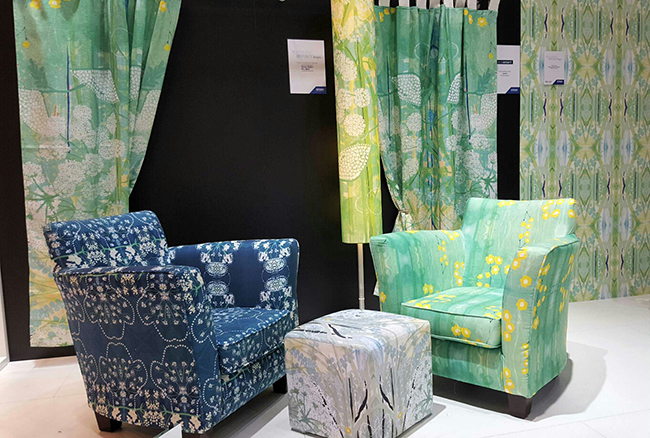Heimtextil is something of a pull for anyone involved in textiles. So can PSPs learn much from the trends and developments highlighted at the recent 2016 event? Duncan Ferguson, director of Professional Printings Solutions for exhibitor Epson Europe, gives his view.
The digital print technology hall at Heimtextil in Frankfurt in January was really inspiring this year in terms of the high level of interest from textile designers and all sizes of textile and decor product manufacturers and print service providers (PSPs) that we experienced on our booth.
Epson’s aim at the event was to show the versatility of the 64in dye-sublimation SureColor SC-F printers to produce high quality textiles and a variety of decorated homeware items on our booth. In addition, we showed samples from the 3.2m wide Robustelli MonnaLisa direct-to-fabric printers and – at the other end of the spectrum – our desktop SureColor SC-F2000 small-format printer.
Although Heimtextil is mostly about home textiles as you would expect, there is an increasing level of complementary decor products on show, such as wallpaper and tableware. On our booth specifically, we displayed decorated plates, cutlery, mugs, vases printed using dye-sublimation printers, plus aprons, tea towels, lampshades and napkins, alongside a range of printed textiles for soft furnishings.
This product spread attracted huge interest from designers and suppliers looking to diversify their ranges and tap into the trend for customised decor products and triggered lots of interesting conversations. What was clear from these is that they all want to learn more about digital printing and how they can use the technology to produce quality decor products.
On the fabric front, the choice of really great quality polyester-based textiles that emulate linen, cotton, jersey and velvet are inspiring designers to use the dye-sub process to produce bespoke decor products. We partnered with Premier Textiles at Heimtextil and, as designers looked through their sample books and the quality of the printed end result, the first questions were invariably “How much does it cost to get it printed?” followed by “How do I find a dye-sub print company to print my designs?” then “Can print firms also make up the finished product for me?”.
Given the high level of interest, I believe there is no better time for PSPs to serve this new market by forging relationships with designers and décor manufacturers. Granted, it’s not going to be easy but the early pioneers have not looked back. Some offer a simple textile print service, others offer a one-stop print and make service by employing or partnering with sewers and upholsterers. The most successful have online Web-to-print retail front ends where the public can choose from a range of stock designs or upload their own designs.
Epson is working with designers and design schools around Europe to show them the potential of digital printing. It’s been an inspiring experience from both sides. They love the freedom to experiment with designs and materials and have produced some stunning products that would have been too costly to do using traditional methods. For example, we worked with Bryony Benge-Abbott of Blooming Bryony Designs to produce designs for last year’s Heimtextil and in just a year she has changed her business as a direct result of the experience.
Since then she has started working with a couple of PSPs to print her textiles, partnered with an upholsterer and sewers to make ‘art’ armchairs and cushions, and is selling fabric by the metre online. Epson worked with her again this year and she put her designs onto tableware for the first time, marking another expansion for her designs in 2016.
There is a strong generational change that is driving growth - the ‘millennial’ generation is tech savvy and has strong spending power. They like to be individual and are quick to change their fashion and environments and buy ‘digitally printed’ apparel and decor items. And we see a rapid growth in designers - such as Orla Kiely and Cath Kidston - who are maximising the opportunity to print quality images on all sorts of materials, in all shapes, both 2D and 3D.
At a show like Heimtextil the focus is predominantly on high-volume production. But the development of affordable, entry-level, digital printing equipment opens up considerable opportunities for small companies, artisan designers and entrepreneurs - and the PSPs that can serve them.
At the WTiN Digital Textile Conference on the first day of the show, James Rankin, market analyst, said that apparel and home textiles have now overtaken signage as leading use of digital fabric. Clearly a great opportunity now for PSPs to diversify.


